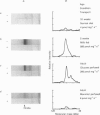Abstract
1. The ontogenic development of the intestinal Na(+)-glucose co-transporter was measured in lambs as a function of diet. Transport activity was assayed in brush-border membrane vesicles and the expression of transport protein in the brush-border membrane determined by Western analysis. 2. Na(+)-dependent D-glucose transport increased to a maximum (300-700 pmol mg-1 s-1) within the first 2 weeks of birth and then declined to negligible amounts (less than 10 pmol mg-1 s-1) over the next 8 weeks. There was no further change over the next 2-3 years. Early changes were associated with modifications in both the maximum velocity Vmax for transport and expression of carrier protein in the brush-border plasma membrane. 3. Maintaining lambs on a milk replacer diet beyond the normal weaning period prevented the normal decline in the expression of Na(+)-glucose co-transport. At 5 weeks the transport rate was 433 +/- 150 pmol mg-1 s-1 in lambs maintained on milk replacer, but only 79 +/- 40 pmol mg-1 s-1 in normally reared control lambs. 4. Infusing the proximal intestine of 2- to 3-year-old sheep with 30 mM-D-glucose for four days increased the rate of transport 40- to 80-fold above that found in control animals perfused with mannitol. A similar but smaller increase was observed in one animal perfused with the non-metabolizable sugar alpha-methyl-D-glucopyranoside. The induced increase in glucose transport was correlated with the expression of the co-transporter protein in the brush-border plasma membrane. 5. It is concluded that the age-related decline in Na(+)-glucose co-transport in the sheep intestine is directly due to the decrease in D-glucose (and D-galactose) reaching the small intestine after development of the rumen. These results further suggest that luminal sugar substrates for the co-transporter promote both the maintenance and the up-regulation of the brush-border transport protein and it is the intact sugar itself which controls gene expression during enterocyte maturation.
Full text
PDF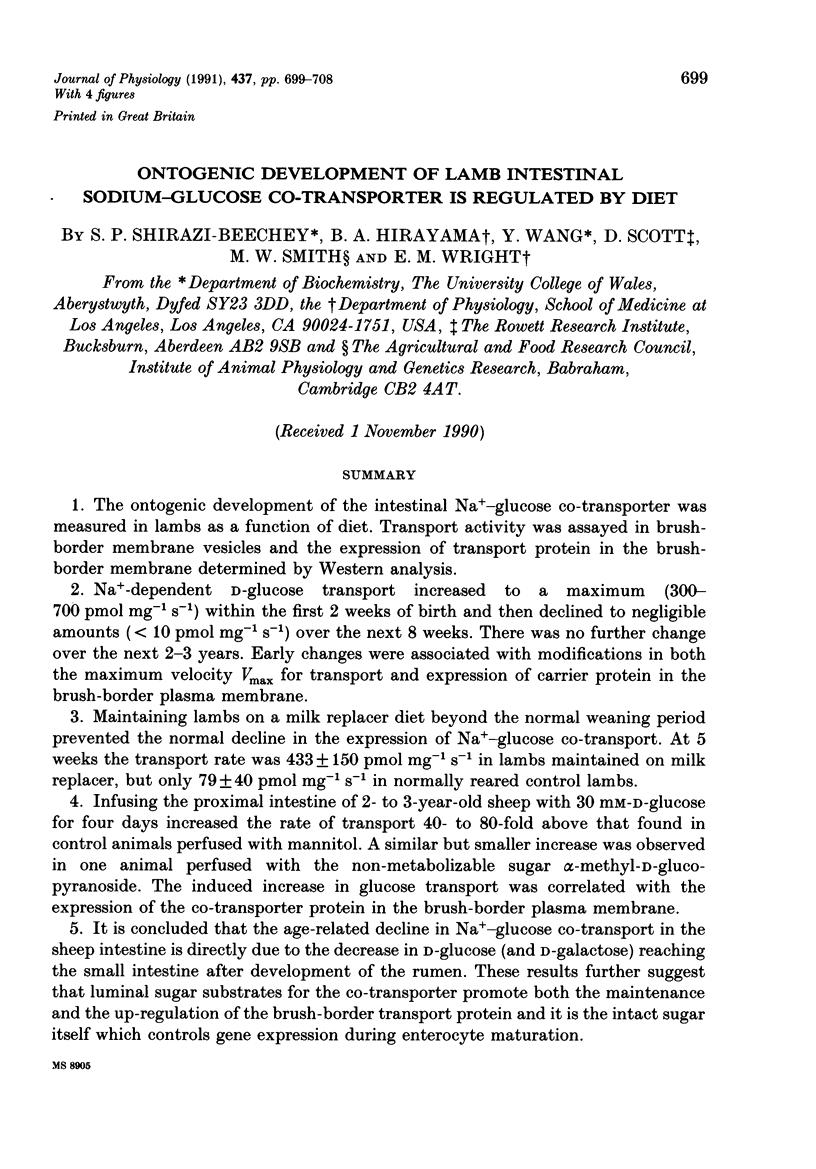
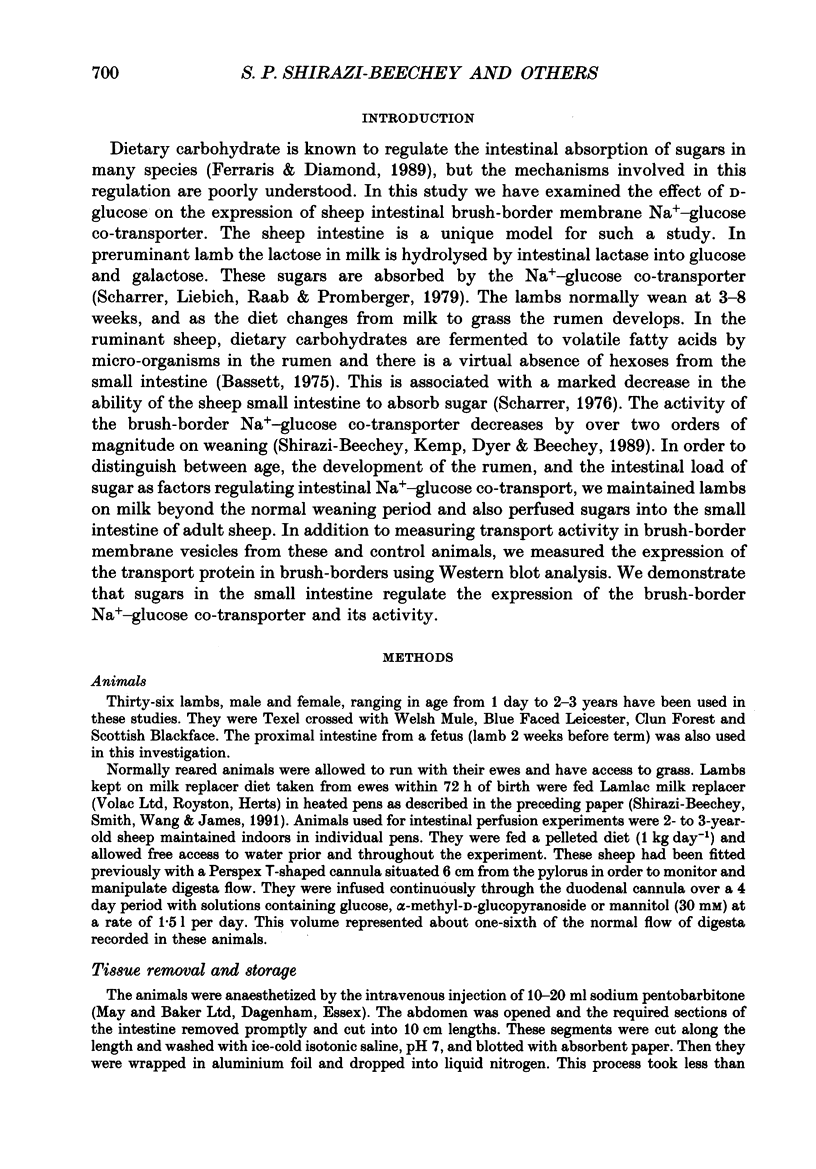
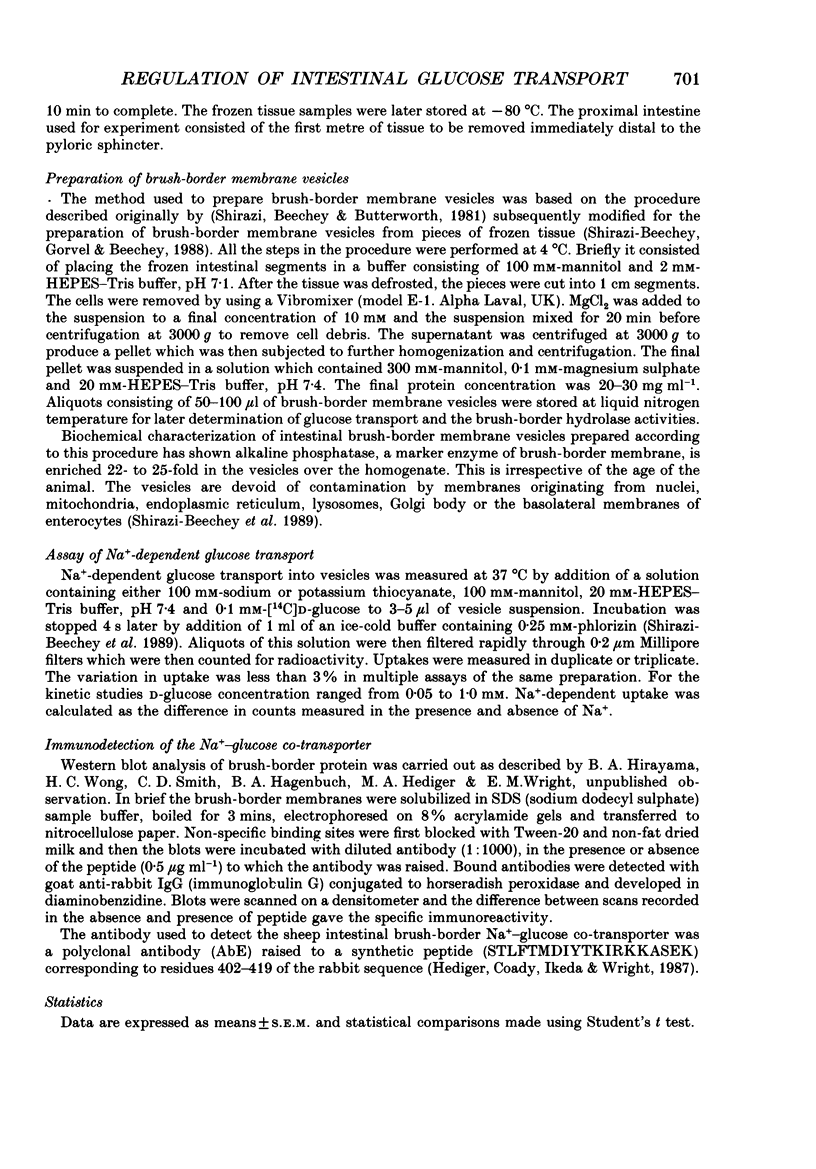
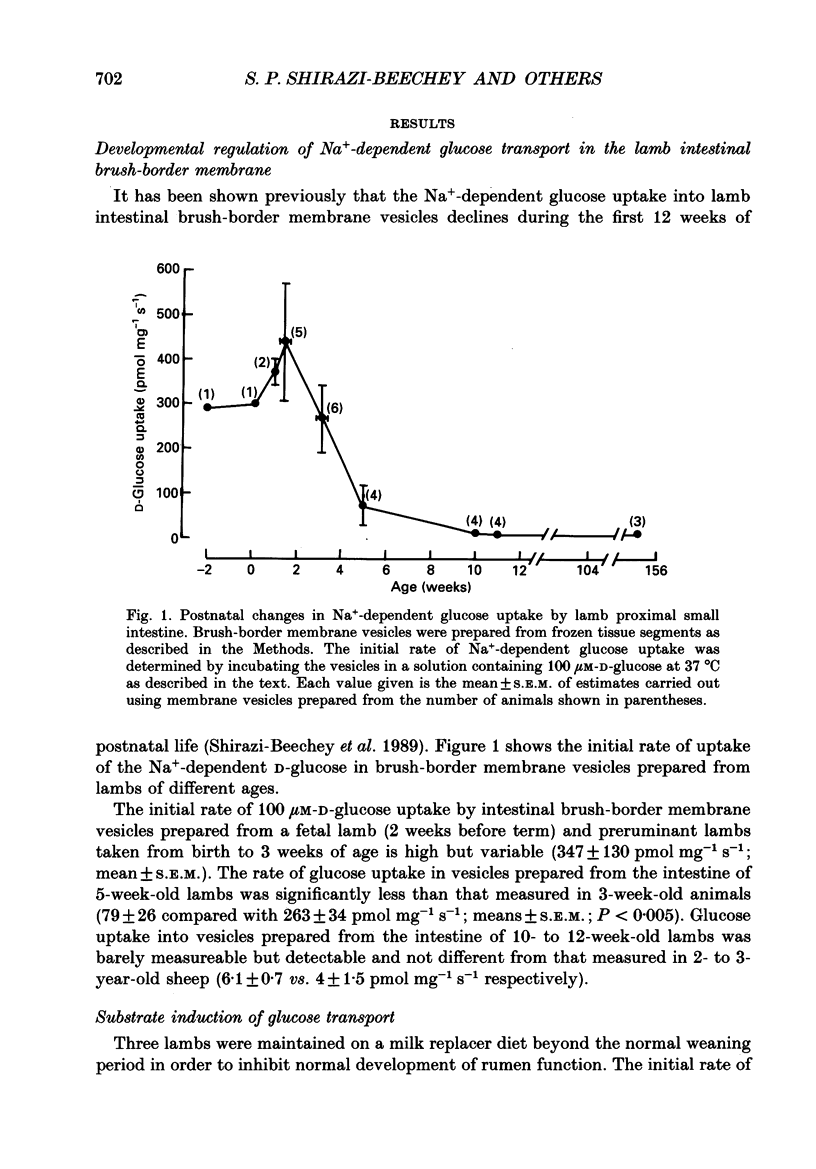
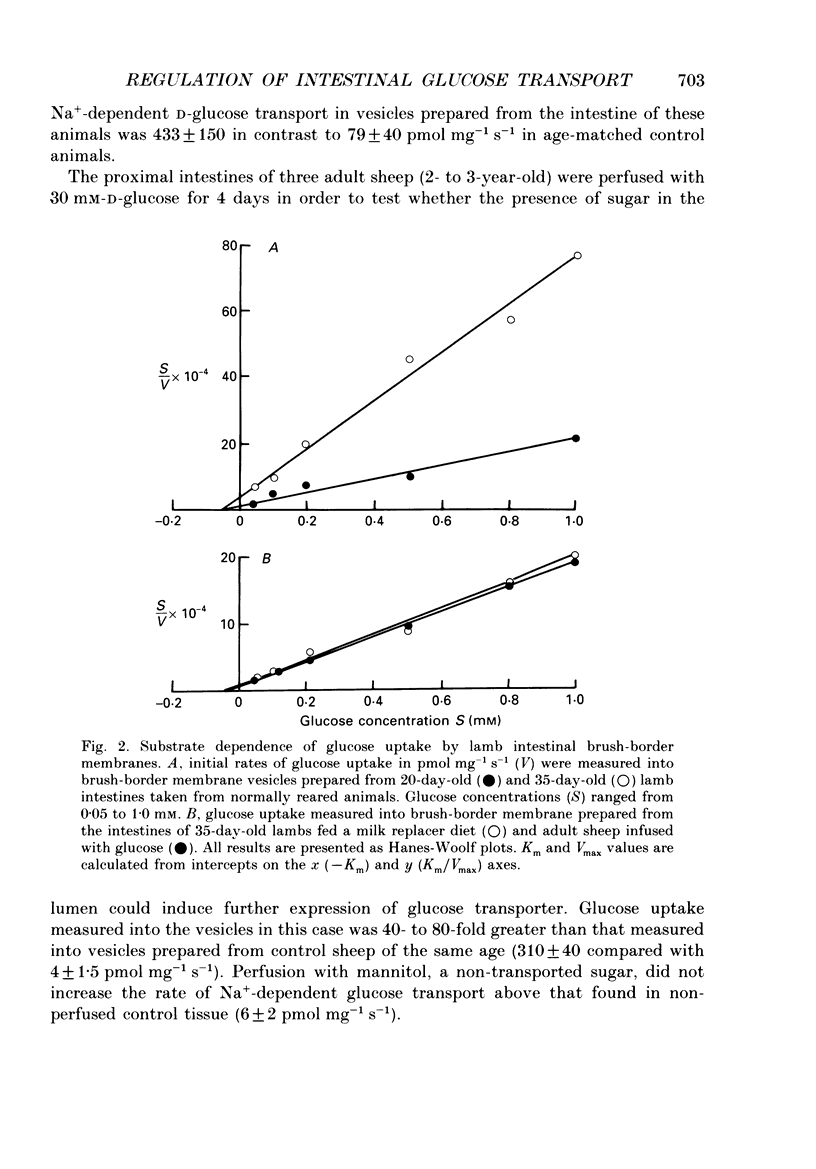
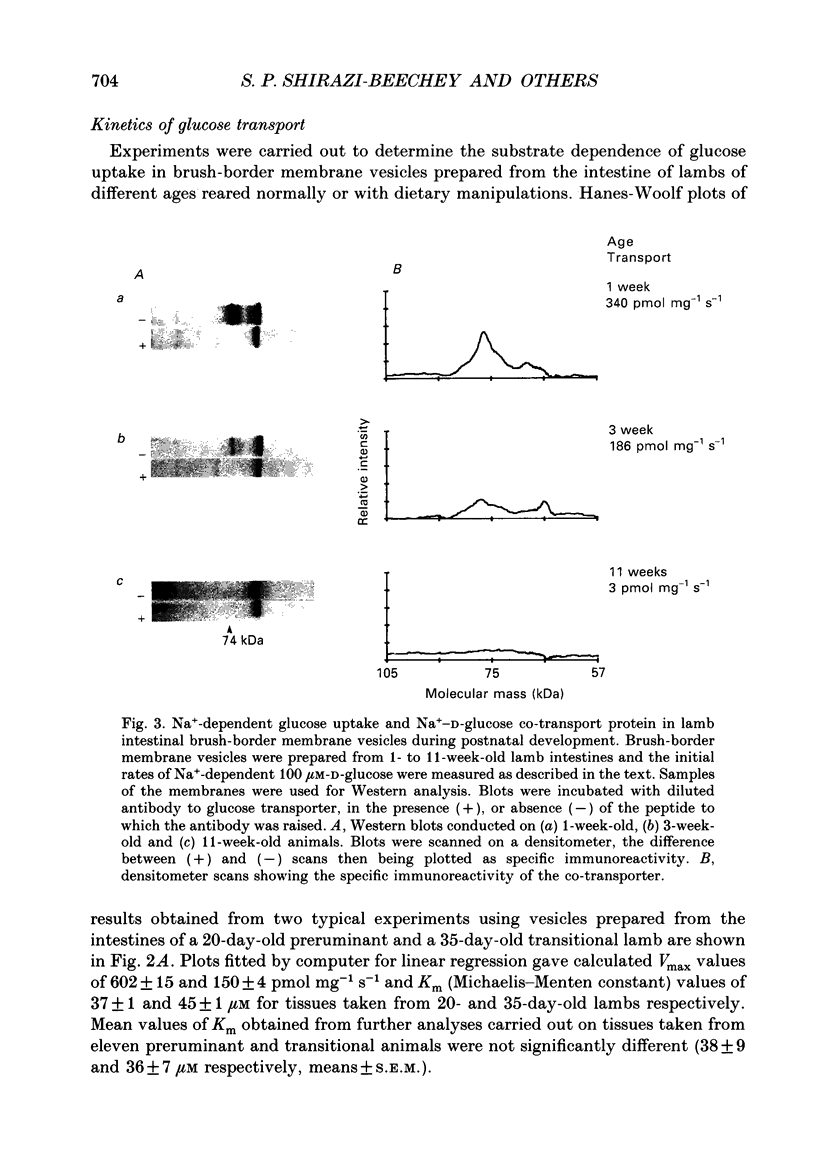
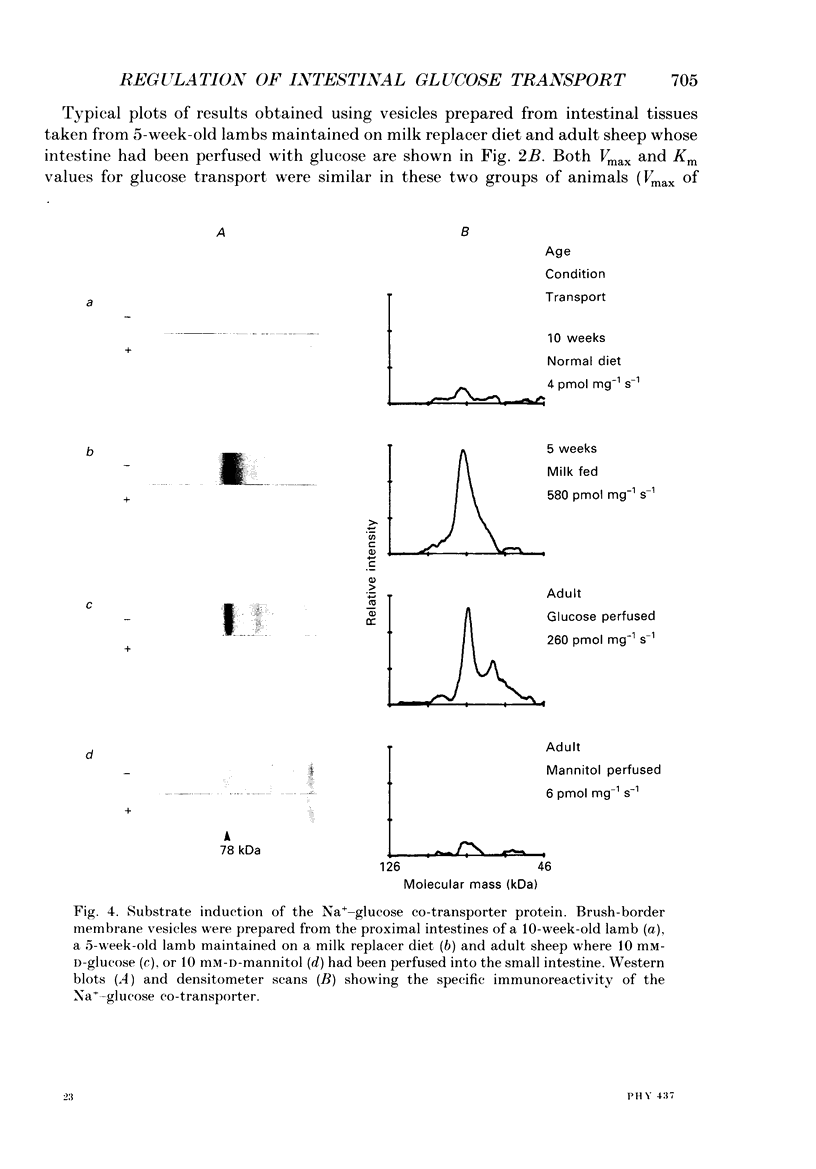
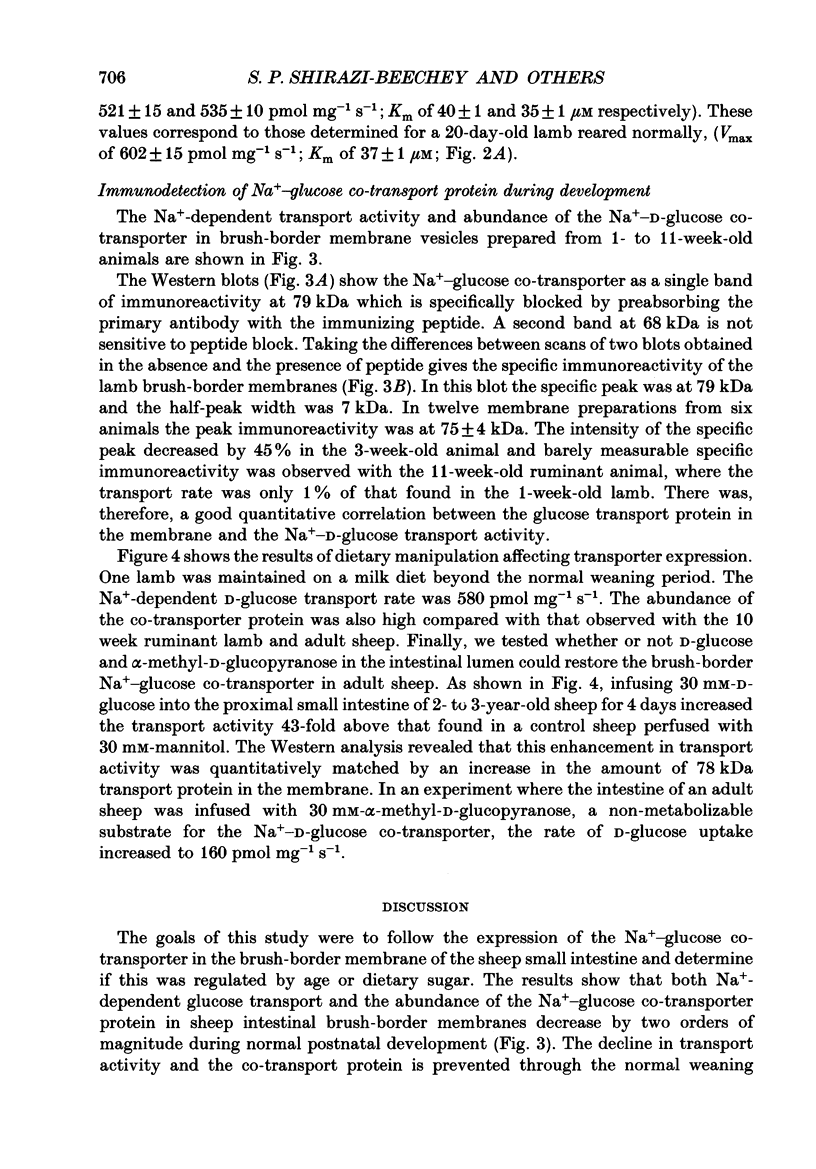
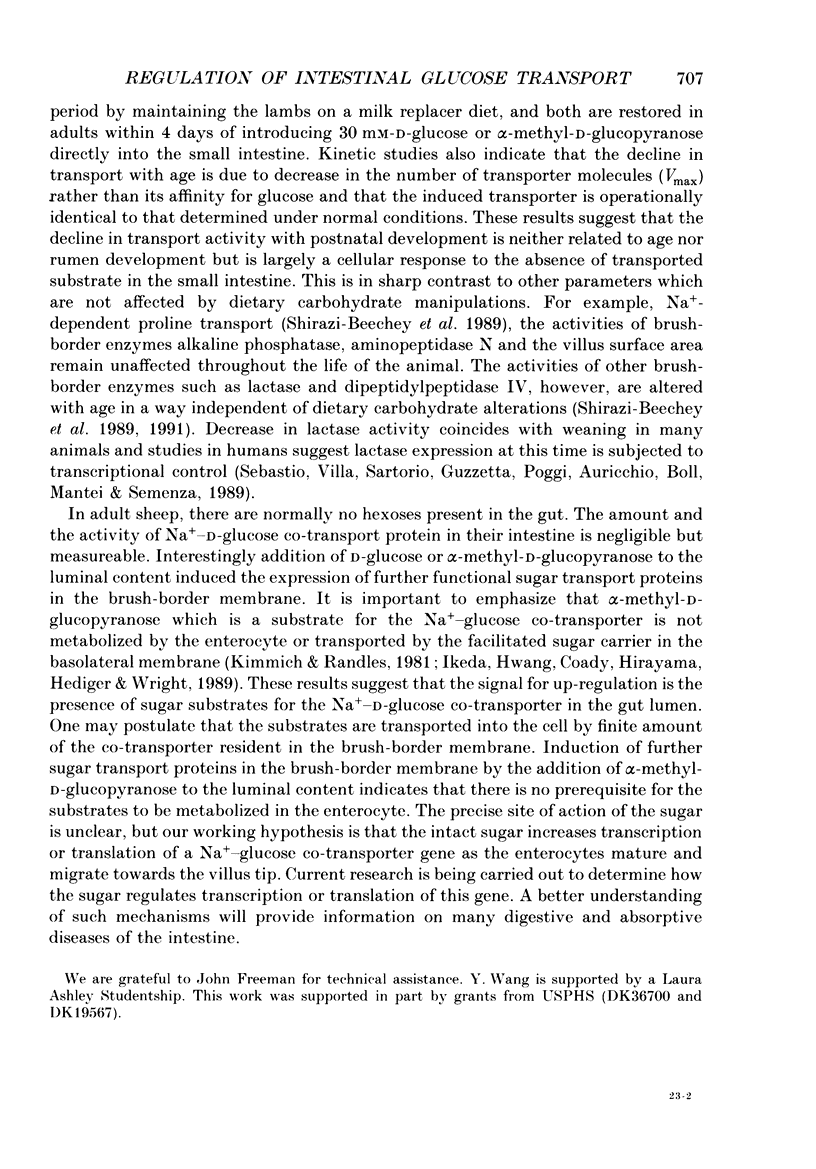
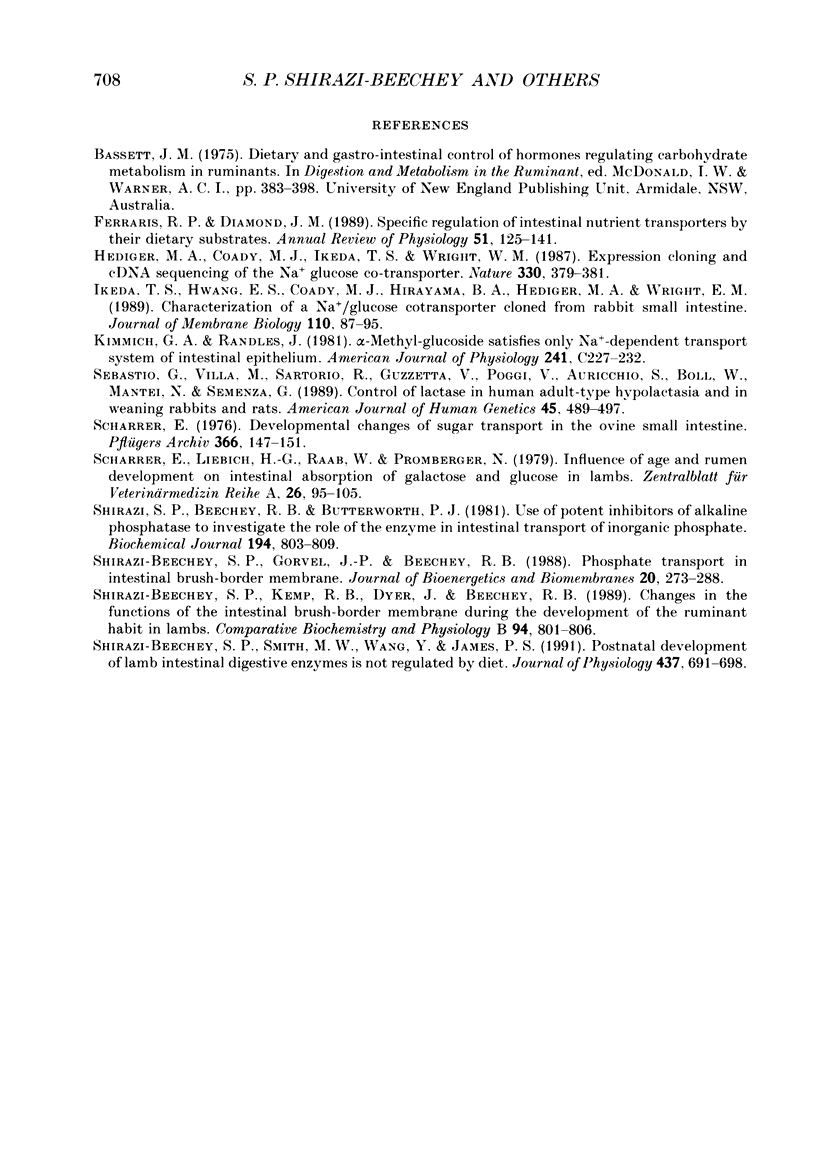
Images in this article
Selected References
These references are in PubMed. This may not be the complete list of references from this article.
- Ferraris R. P., Diamond J. M. Specific regulation of intestinal nutrient transporters by their dietary substrates. Annu Rev Physiol. 1989;51:125–141. doi: 10.1146/annurev.ph.51.030189.001013. [DOI] [PubMed] [Google Scholar]
- Hediger M. A., Coady M. J., Ikeda T. S., Wright E. M. Expression cloning and cDNA sequencing of the Na+/glucose co-transporter. 1987 Nov 26-Dec 2Nature. 330(6146):379–381. doi: 10.1038/330379a0. [DOI] [PubMed] [Google Scholar]
- Ikeda T. S., Hwang E. S., Coady M. J., Hirayama B. A., Hediger M. A., Wright E. M. Characterization of a Na+/glucose cotransporter cloned from rabbit small intestine. J Membr Biol. 1989 Aug;110(1):87–95. doi: 10.1007/BF01870995. [DOI] [PubMed] [Google Scholar]
- Kimmich G. A., Randles J. alpha-Methylglucoside satisfies only Na+-dependent transport system of intestinal epithelium. Am J Physiol. 1981 Nov;241(5):C227–C232. doi: 10.1152/ajpcell.1981.241.5.C227. [DOI] [PubMed] [Google Scholar]
- Scharrer E., Liebich H. G., Raab W., Promberger N. Influence of age and rumen development on intestinal absorption of galactose and glucose in lambs. A functional and morphological study. Zentralbl Veterinarmed A. 1979 Feb;26(2):95–105. doi: 10.1111/j.1439-0442.1979.tb00655.x. [DOI] [PubMed] [Google Scholar]
- Sebastio G., Villa M., Sartorio R., Guzzetta V., Poggi V., Auricchio S., Boll W., Mantei N., Semenza G. Control of lactase in human adult-type hypolactasia and in weaning rabbits and rats. Am J Hum Genet. 1989 Oct;45(4):489–497. [PMC free article] [PubMed] [Google Scholar]
- Shirazi-Beechey S. P., Gorvel J. P., Beechey R. B. Phosphate transport in intestinal brush-border membrane. J Bioenerg Biomembr. 1988 Apr;20(2):273–288. doi: 10.1007/BF00768399. [DOI] [PubMed] [Google Scholar]
- Shirazi-Beechey S. P., Kemp R. B., Dyer J., Beechey R. B. Changes in the functions of the intestinal brush border membrane during the development of the ruminant habit in lambs. Comp Biochem Physiol B. 1989;94(4):801–806. doi: 10.1016/0305-0491(89)90169-7. [DOI] [PubMed] [Google Scholar]
- Shirazi-Beechey S. P., Smith M. W., Wang Y., James P. S. Postnatal development of lamb intestinal digestive enzymes is not regulated by diet. J Physiol. 1991 Jun;437:691–698. doi: 10.1113/jphysiol.1991.sp018619. [DOI] [PMC free article] [PubMed] [Google Scholar]
- Shirazi S. P., Beechey R. B., Butterworth P. J. The use of potent inhibitors of alkaline phosphatase to investigate the role of the enzyme in intestinal transport of inorganic phosphate. Biochem J. 1981 Mar 15;194(3):803–809. doi: 10.1042/bj1940803. [DOI] [PMC free article] [PubMed] [Google Scholar]




